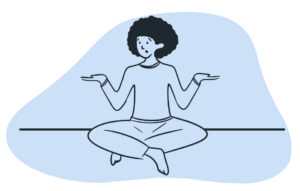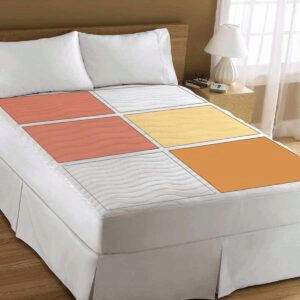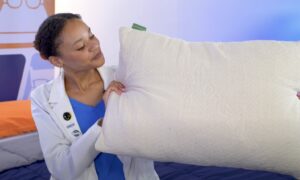Difference Between Mattress Pad & Toppers
Disclosure: By clicking on the product links in this article, Mattress Nerd may receive a commission fee at no cost to you, the reader. Read full disclosure statement.
The terms ‘mattress pad’ and ‘mattress topper’ are often used interchangeably, but they are actually unique products with distinct uses and characteristics. Below, we explain what each is and break down the main differences between pads and toppers.
What is a Mattress Pad?
A mattress pad, sometimes called a mattress cover, is a thin layer that’s placed on top of a mattress to protect its surface against contamination from dust, stains, pet urine, and more. Unlike mattress protectors, which only keep a mattress surface clean, mattress pads can offer a slight adjustment to a bed’s firmness setting. Most are made from cotton or polyester and are fairly thin.
What is a Mattress Topper?
A mattress topper is a 1” to 3” thick layer that’s placed on top of a mattress to change the feel of its sleep surface. Toppers make a mattress softer, and some toppers also help the bed sleep cooler. They can be made from a wide variety of materials ranging from memory foam to latex, wool, and down. While toppers may provide some protection for the mattress, their primary purpose is to provide extra cushioning.
How are They Different?
Here’s a list of the main differences between mattress pads and mattress toppers.
- Purpose: Toppers add comfort to a mattress, and pads protect a mattress from contaminants.
- Material Composition: Toppers can be made from a wide variety of materials, while pads are usually made from cotton or polyester.
- Thickness: Toppers come in many thickness options, but pads are usually 1” or thinner.
- Fit: A topper can lay on top of a mattress’ surface or be tucked underneath a fitted sheet, while pads are only designed to be tucked underneath a fitted sheet.
- Mattress Protection: Mattress pads provide adequate protection from stains and more; toppers may provide some protection, but that isn’t their primary purpose.
- Cushioning: Toppers can change the overall feel of a sleeping surface, while mattress pads have little to no impact on how the bed feels.
- Durability: Mattress toppers are available in durable materials, but most pads only last a few years.
- Cost: Toppers come in a wide variety of price points that range from $75 to $400, but most mattress pads typically cost less than $100.
Materials in Mattress Pads and Toppers
Mattress toppers and mattress pads both come in several types of materials, but there’s more selection available when purchasing a mattress topper. Most pads are made from cotton, polyester, down, and rayon and measure 1” or less. Mattress toppers can be made from convoluted polyfoam, memory foam, latex, down, down alternative, wool and more, and they measure 1” to 3” thick.
The benefit of having many materials to choose from when purchasing a mattress topper is that you can select a topper that meets your unique needs. For example, memory foam and latex toppers conform closely to the body, while wool and feather toppers sleep a little cooler.
Although mattress pads come in fewer material options, there are slight variances between brands and styles that can increase or decrease the price point and quality of the product. Pads made from natural materials, for example, may sleep cooler but will likely cost more.
How to Decide Between a Mattress Pad vs. Mattress Topper
The choice between a mattress pad and a mattress topper comes down to your needs.
If you simply want to protect a new or used mattress from moisture, stains, and other contaminants to increase its durability, go with a mattress pad. They’re also our recommendation for sleepers who want an affordable option to change the cooling ability of their bed to a modest extent.
If you want to significantly change the feel or support level of your new or used mattress, you’ll need a mattress topper. These are best for sleepers who are unhappy with a new mattress’ feel but don’t have the option to return it. It’s also great for those who have an older mattress that’s beginning to show signs of wear or is no longer comfortable, or who want to extend the life of an older mattress.
Pros and Cons of a Mattress Pad
Pros:
- Most are inexpensive and cost less than $100
- Usually waterproof to protect mattresses against spills, urine, and sweat
- Cooling mattress pads can prevent body heat retention and make your bed more breathable
- Protect your mattress from infestations, including dust mites, bed bugs and other critters
- Easy to remove and launder, and most are machine washable
Cons:
- Unlikely to alter the feel, comfort level or support of your mattress to a significant extent
- More prone to damage than toppers, as most are relatively thin and flimsy
Pros and Cons of a Mattress Topper
Pros:
- Hypoallergenic mattress toppers are available, including those made from fibers and wool
- Can change the feel of your current mattress, adding a plush layer of comfort for pressure relief, contouring or additional support
- Can add additional support to an old mattress that’s showing signs of wear and sagging (but depending on your budget, we’d recommend a whole new mattress as a replacement)
- Available in many thicknesses and firmness settings for all sleeper types, whether you’re a side sleeper who needs more contouring, a stomach sleeper with pressure points at the hips or a back sleeper who needs the surface of your mattress to be more even
- There are many types of mattress toppers, so you can choose the material of this additional layer based on your unique needs and preferences
Cons:
- Can be costly, with some expensive latex toppers costing up to $400
- Certain topper materials have allergy potential, including latex and feather varieties
Mattress Pads and Toppers: Our Picks
Whether you want an additional layer of comfort between you and your mattress or want to protect your mattress with a thin layer of quilted or padded material, here are some of the best mattress toppers and best mattress pads of 2024.
Tempur-Pedic TEMPUR Topper Supreme
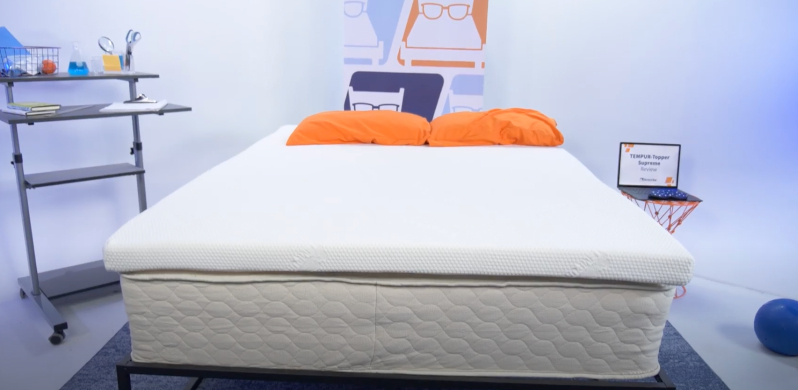
Mattress Nerd Score
4.40 / 5
Accessories Details
Material
Polyester, Memory foam
Warranty
10-year limited warranty
Financing
Available
Shipping Method
Free shipping
Return Policy
No returns
ViscoSoft Select High Density Mattress Topper
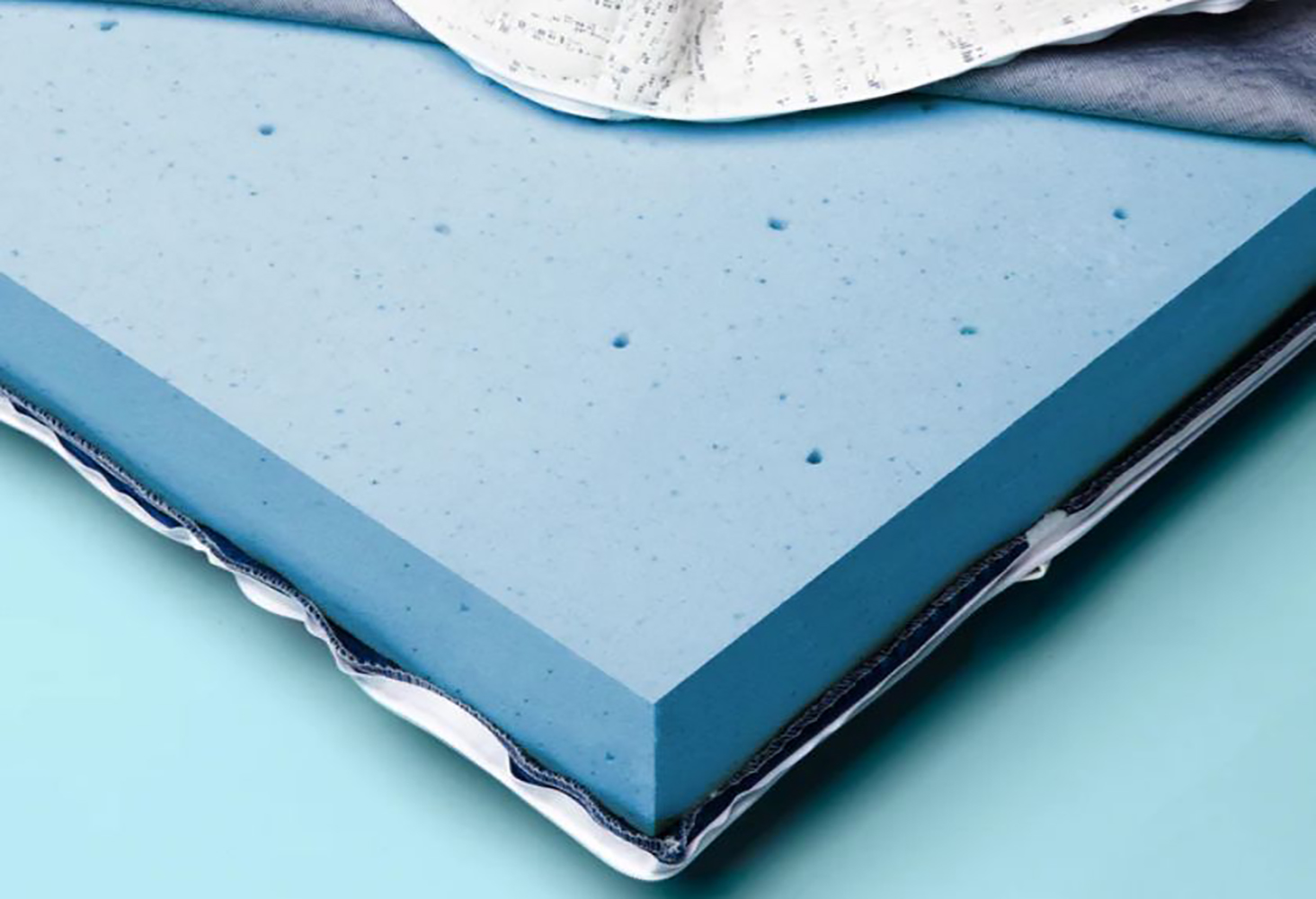
The Viscosoft Select High Density Mattress Topper is the company’s most popular mattress topper. This model comes in multiple firmness options, is soft-to-the-touch, breathable, and supportive. Plus, it’s hot sleeper friendly thanks to the bamboo rayon cover and the cooling gel memory foam insert. Back and side sleepers will love it most, but it won’t be the best option for stomach sleepers.
Mattress Nerd Score
4.50 / 5
Read Full ReviewAccessories Details
Material
Memory foam
Trial Period
90 nights
Warranty
5-year warranty
Financing
Available
Shipping Method
Free shipping
Return Policy
Free returns
Utopia Bedding Quilted Fitted Mattress Pad
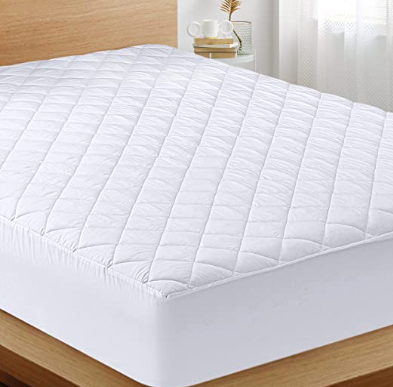
Mattress Nerd Score
4.60 / 5
Accessories Details
Material
Microfiber
Financing
Not Available
Shipping Method
Free shipping
Return Policy
Free returns
Discover more of our picks for the best mattress toppers of 2024 in this guide.
FAQs
Should college students purchase a mattress pad or mattress topper?
It depends. Dorm room beds and apartment beds aren’t built for exceptional comfort, so a mattress topper is your best option if you need to add softness and comfort to your bed at school. If you’re nervous about being fined for damage to the university’s mattress throughout the school year (for instance, from stains or spills), a mattress pad can help protect it.
Can you use a mattress pad and mattress topper together?
There are no strict rules for what can and can’t be used together when it comes to bedding, but most mattress pads and mattress toppers are not designed to be layered. If you decide to pair them, your mattress topper should go directly on top of the mattress, and your mattress pad should go on top of the topper to protect both the topper and the mattress underneath.
What’s the difference between a mattress pad and a mattress protector?
A mattress protector is the cousin of mattress pads and mattress toppers. Consider the three products in tiers, with mattress protectors changing the feel of the mattress hardly at all, mattress pads changing the feel of the mattress very minimally and mattress toppers changing the feel of the mattress to a significant extent. A mattress protector’s sole job is to protect the mattress from spills, so it usually lacks the quilted appearance that most mattress pads have.
Do mattress pads make a bed more comfortable?
No, most mattress pads will not significantly change the feel or firmness of your mattress. Their primary purpose is to protect your bed from stains, contaminants and moisture.
